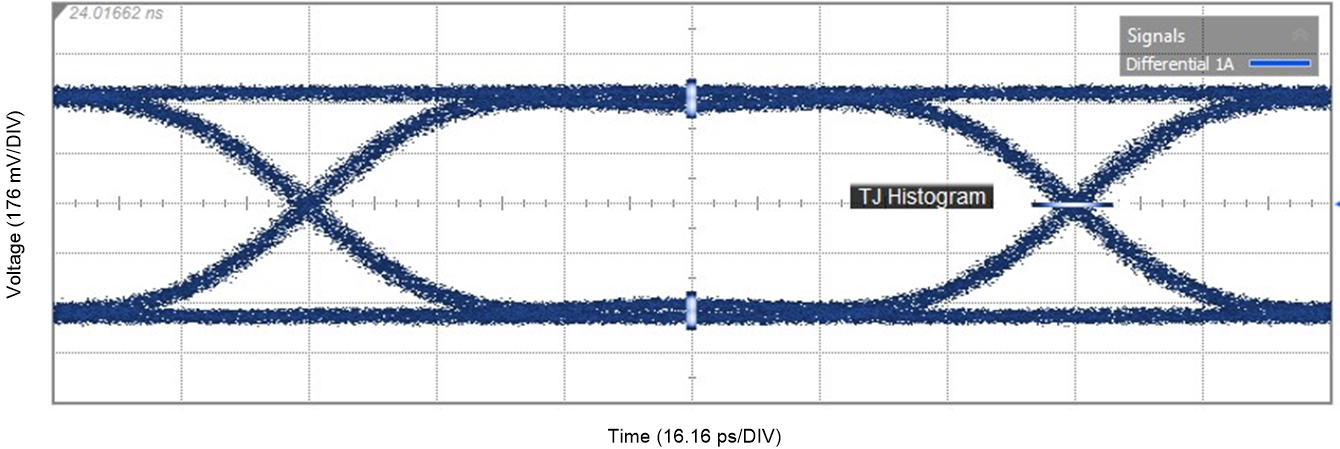ZHCSKE4C october 2016 – december 2020 DS280MB810
PRODUCTION DATA
- 1
- 1 特性
- 2 应用
- 3 说明
- 4 Revision History
- 5 Description (continued)
- 6 Pin Configuration and Functions
- 7 Specifications
- 8 Detailed Description
- 9 Application and Implementation
- 10Power Supply Recommendations
- 11Layout
- 12Device and Documentation Support
- 13Mechanical, Packaging, and Orderable Information
9.2.3.1 Pattern Generator Characteristics
All of the example application results in the sections which follow were tested using a pattern generator with the following characteristics.
 Figure 9-10 Pattern Generator test setup
Figure 9-10 Pattern Generator test setup Figure 9-11 Pattern Generator output at 25.78125 Gbps, 800m Vppd, PRBS9
Figure 9-11 Pattern Generator output at 25.78125 Gbps, 800m Vppd, PRBS9 Figure 9-12 Pattern Generator output at 10.31250 Gbps, 800 mVppd, PRBS9
Figure 9-12 Pattern Generator output at 10.31250 Gbps, 800 mVppd, PRBS9Table 9-1 Pattern Generator Characteristics
| 25.78125 Gbps | 10.3125 Gbps | |
|---|---|---|
| Differential peak-to-peak voltage (VOD) | ~800 mVppd | ~800 mVppd |
| Channel loss between Pattern Generator and Scope | 2 dB @ 12.9 GHz | 1 dB @ 5.2 GHz |
| Total Jitter @ 1E-15 | 8.0 psP-P | 13.4 psP-P |
| Differential Eye Height @ 1E-15 | 448 mVP-P | 596 mVP-P |